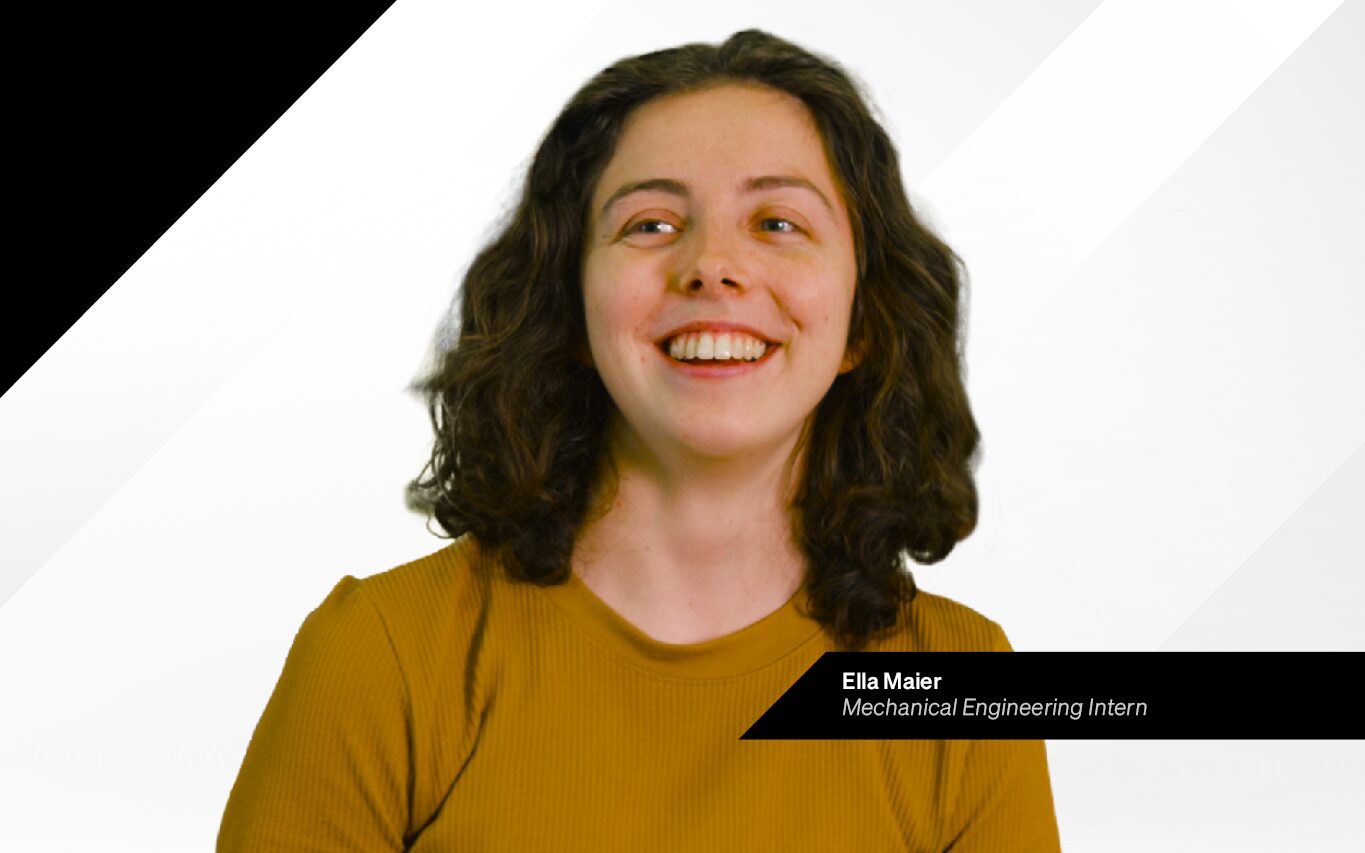News & Insights
Putting skills into practice: A Q&A with Ella Maier
Ella Maier, a Mechanical Engineering Intern at Salas O’Brien, reflects on her internship experience.

How did you get into robotics?
My older brother encouraged me to join a high school robotics team for girls through Carnegie Melon University (CMU), and I went for it. The team, Girls of Steel, is the first robotics team based out of the Robotics Institute at CMU that’s aimed at funneling more girls into STEM, robotics specifically. The team was very established, and I was mentored by some of the best roboticists in the world. We got to build a 120-pound robot over the course of six weeks to compete regionally, and I was on the mechanical team and really enjoyed it. It was then that I decided mechanical engineering and robotics was for me.
What is it like working on Salas O’Brien’s Armor 1 project?
Being part of the Armor 1 project—the largest mobile robot in the world—and making it work is really special to me, especially because of the robot’s purpose. The robot will reinforce riverbanks along the Mississippi River to help protect transportation in the area and make close populations less vulnerable to flooding.
On the robotics team, I gained valuable hands-on experience using a software tool called SolidWorks to create and repair robot parts. When using the tool, it’s important to ask questions like, “Why is this part designed this way?” or “What will happen when I change this part?” After exploring various problems and solutions, it’s incredibly rewarding to see the digital models I worked on come to life as physical parts critical to the robot’s functionality.
In engineering, there are a lot of projects out there that are much less focused on solely creating a good impact on society, so I’m proud to have a role in the project. I’ve worked in conservation before, so the project was a great opportunity to combine my passions for conservation and helping people and the environment.
Learn more about the Salas O’Brien’s Armor 1 project.
How has your internship experience benefitted you?
My internship will be useful in my future career with the connections I’m creating and knowing that Salas O’Brien has its hands in plenty of different projects promoting a better, cleaner society across North America and globally. This internship also gave me the space to grow in my skills and utilize the ones I already have. It’s been amazing to get on the Armor 1 project and start feeling useful from day one, which is huge.
Why are women’s voices in STEM fields important?
Generally, there are not as many women pursuing STEM as men. It’s a historical trend that institutions and organizations like Salas O’Brien are actively trying to address.
The ratio of senior engineers in the workforce who are women versus those who are men is very skewed, so it’s important to get female voices into those positions because they have perspectives that are valuable to society and projects. Robotics teams like CMU’s Girls of Steel does a great job of getting women excited about STEM. The team was special because it was an all-girls team, including the CEO, and there was no sort of gender roles.
What does engineered for impact mean to you?
Engineered for impact means that we’re always focused on making a positive impact on whatever we do, solve engineering problems no matter the difficulty, and start projects from a very solid foundation, our team.